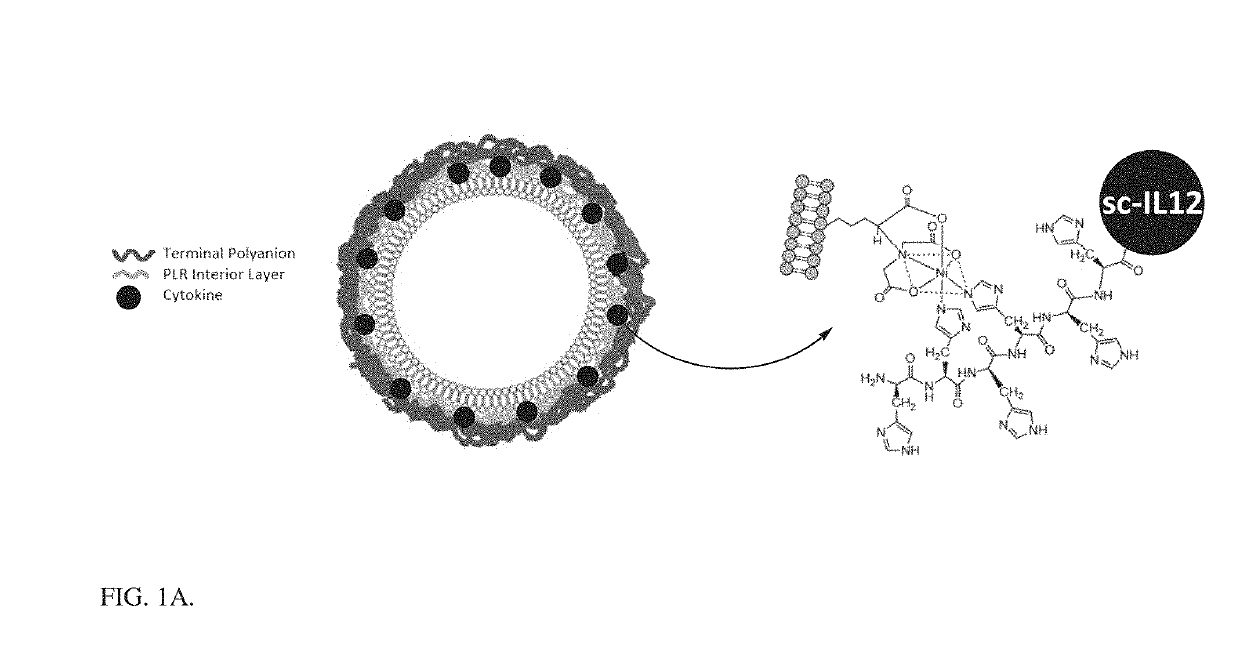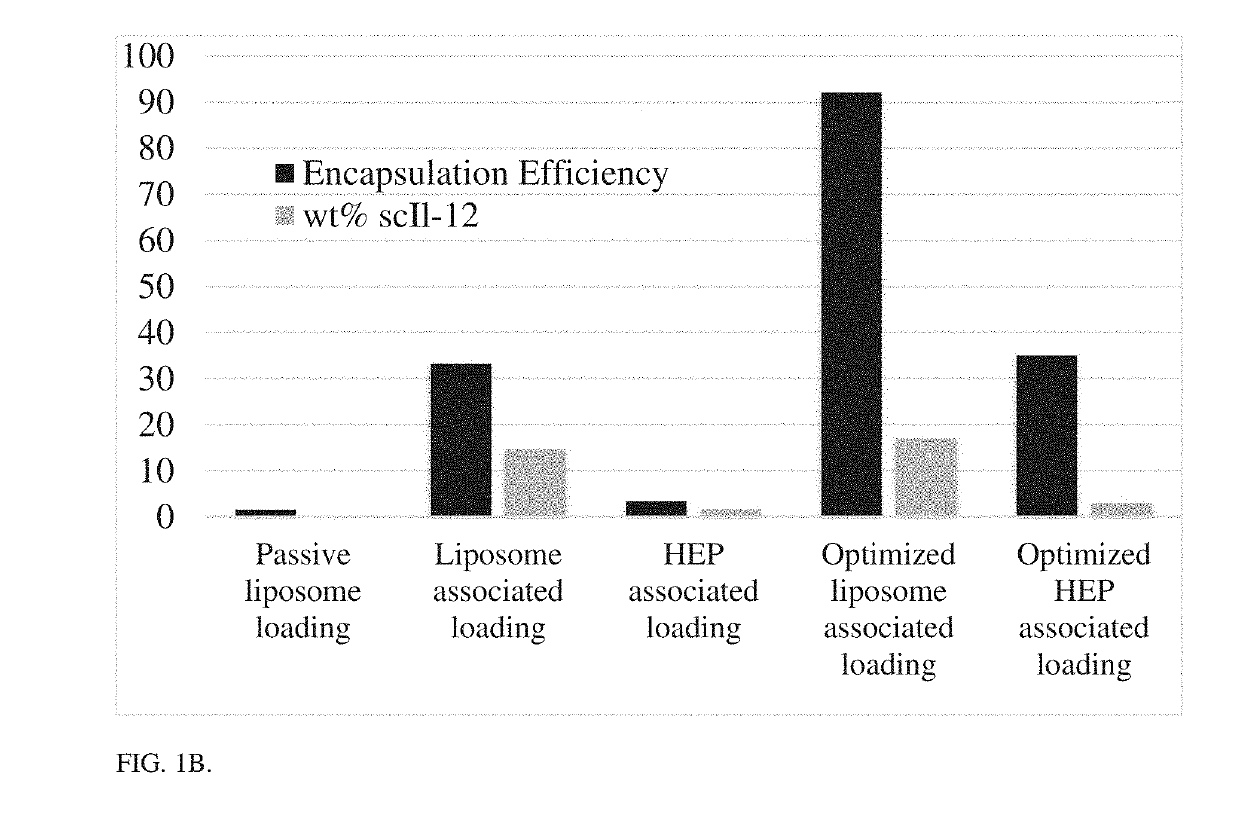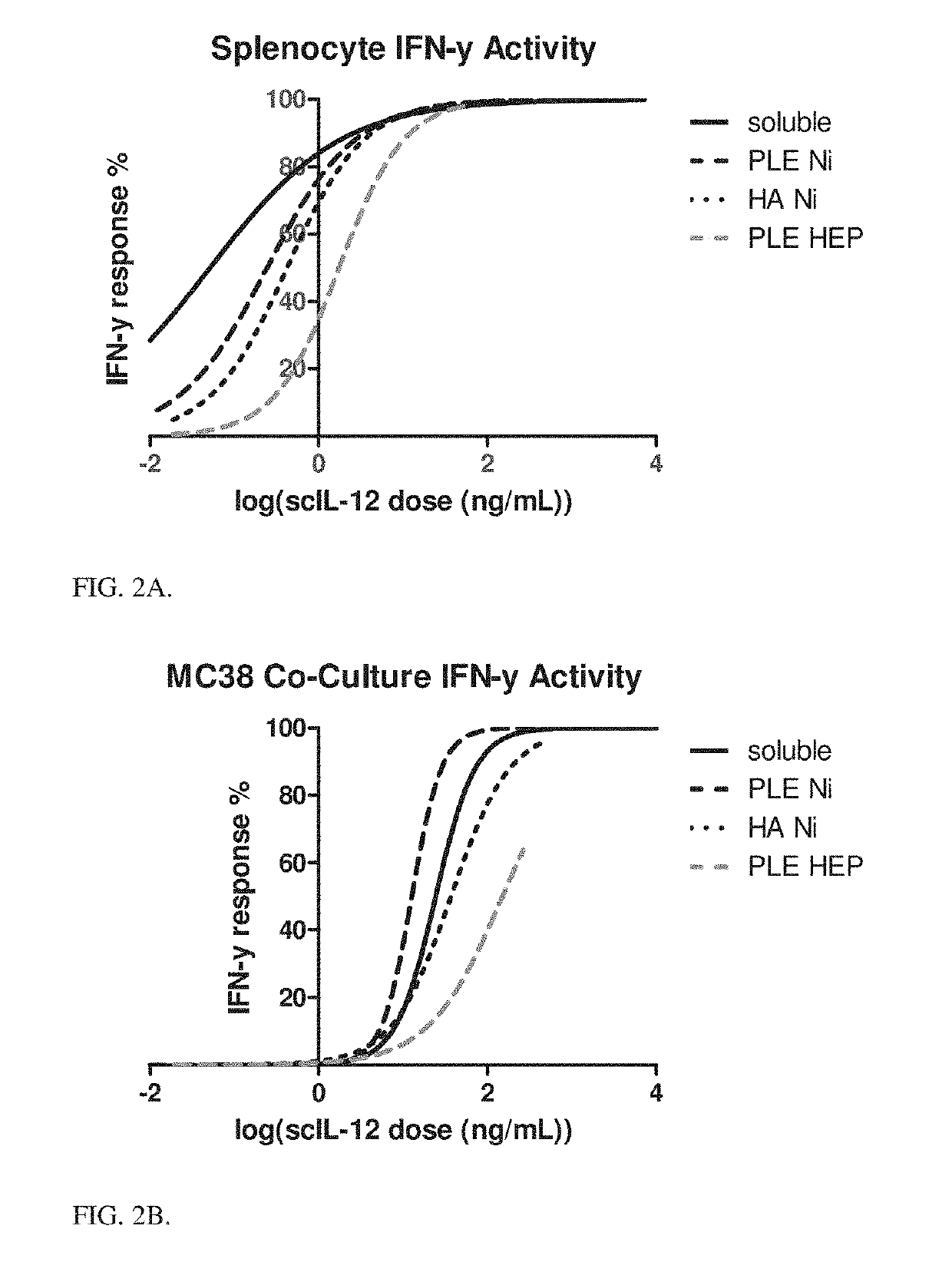Layer-by-layer nanoparticles for cytokine therapy in cancer treatment
- Summary
- Abstract
- Description
- Claims
- Application Information
AI Technical Summary
Benefits of technology
Problems solved by technology
Method used
Image
Examples
example 1
of Coated Liposomes
[0124]A liposomal core nanoparticle with 5% DGS-NTA (Ni) (1,2-dioleoyl-sn-glycero-3-[(N-(5-amino-1-carboxypentyl)iminodiacetic acid)succinyl] nickel salt) lipid by mole was reacted with an scIL-12 construct which contains a 6×HIS tag at the c-terminus. This resulted in layering of the scIL-12 around the preformed liposome by Ni-HIS interaction. The scIL-12 liposome (which bears a negative charge) was then coated with a bilayer of poly(L-arginine) (PLR) and a terminal layer of polyanion using electrostatic interactions. The process of layer-by-layer particle formation is outlined in FIG. 4, and the resulting scIL-12-containing particles are depicted in FIG. 1A. The addition of these layers allowed for increased targeting of the particle to the tumor and reduction in systemic scIL-12 exposure. The optimization of this particle manufacturing procedure allowed for >90% encapsulation of protein with a final weight percentage of 17% scIL-12 in the particle, a large impr...
example 2
oating
[0125]A library of different external layer materials was tested for their tumor targeting and immune cell targeting capabilities to make the most effective delivery vehicle for scIL-12. A series of charged polypeptides have been studied as the external layers of nanoparticles, and have been shown to undergo differing amounts of binding versus internalization with different cell types. Flow cytometry was used to asses binding of particles to different cell types. Briefly, fluorescent core particles were coated with PLR followed by different polyanion terminal layers and incubated with different cell lines both cancerous and noncancerous for 24 hours. Cultures were then measured for particle associated fluorescence by flow cytometry. Hyaluronic acid and PLE terminal layers showed increased association with cancer cells as compared to noncancerous cell lines as measured by mean fluorescence intensity. Particles were measured for their association with immune populations by incub...
example 3
[0131]A toxicity study was performed, delivering either 5 or 7.5 μg / mouse / day of scIL-12 in the Ni-HIS particles with PLE terminal layer over 5 days. Controls included 5 pg / mouse / day of soluble scIL-12 over the same period, particles without cytokine at equivalent dosing, and PBS. The mice were tracked for weight loss over the 5-day study period. The particle bound IL-12 showed a significant reduction in toxicity, losing negligible weight even at higher dosing compared to soluble IL-12 which saw approximately 10% reduction in body weight over 5 days FIG. 3.
[0132]At the end of the 5-day period serum was collected from the different groups and measured for inflammatory cytokine levels. Cytokine storm (as evidenced by elevated levels of inflammatory cytokines in circulation) is the route by which IL-12 therapy shows toxicity. FIGS. 6A and 6B show serum cytokine response depending on the scIL-12 formulation. These data agree with the weight changes, showing that particle bound scIL-12, ...
PUM
| Property | Measurement | Unit |
|---|---|---|
| Length | aaaaa | aaaaa |
| Affinity | aaaaa | aaaaa |
Abstract
Description
Claims
Application Information
 Login to View More
Login to View More - R&D
- Intellectual Property
- Life Sciences
- Materials
- Tech Scout
- Unparalleled Data Quality
- Higher Quality Content
- 60% Fewer Hallucinations
Browse by: Latest US Patents, China's latest patents, Technical Efficacy Thesaurus, Application Domain, Technology Topic, Popular Technical Reports.
© 2025 PatSnap. All rights reserved.Legal|Privacy policy|Modern Slavery Act Transparency Statement|Sitemap|About US| Contact US: help@patsnap.com



